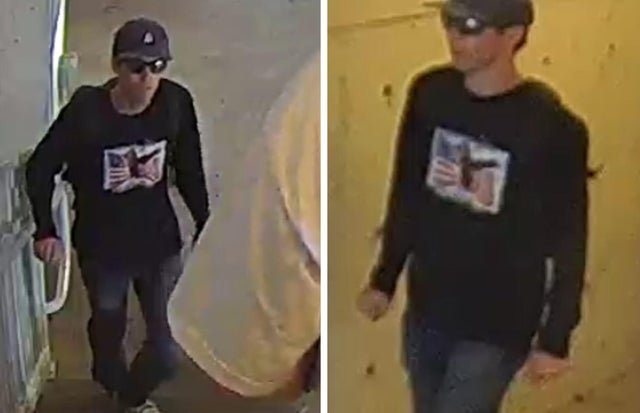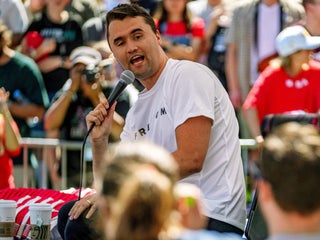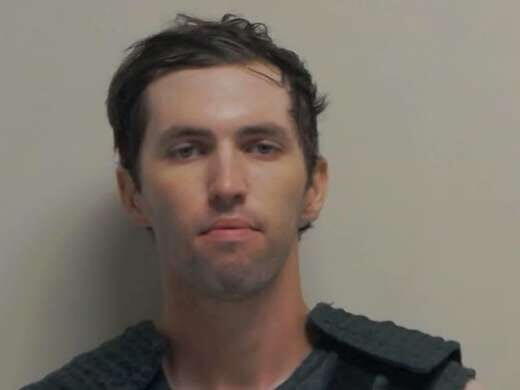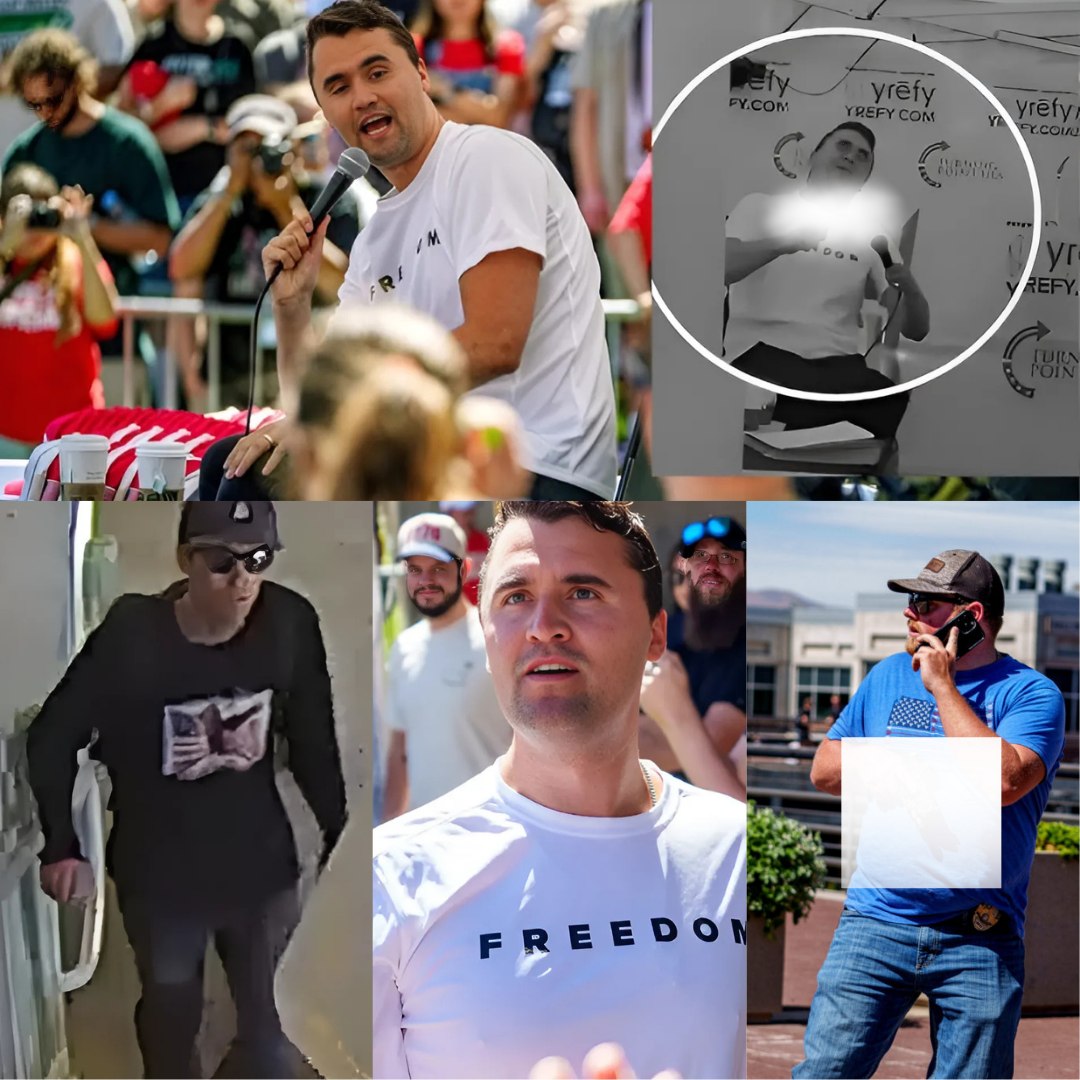Navy Veteran Sparks Shockwave with Video Analysis of Kirk Shooting: Frame-by-Frame Details Could Overturn the Official Story — The Untold Angle That Might Change Everything.
The Shock No One Saw Coming
The Kirk shooting was supposed to be over. It was supposed to be one of those stories that lived a short life in the headlines, generated a few weeks of outrage, and then quietly dissolved into the archives of official reports. For many, the book was closed. But a sudden twist has torn that narrative wide open again.
A U.S. Navy veteran has stepped into the spotlight with a claim that has shaken not just online communities but also mainstream media. His frame-by-frame video analysis of the Kirk shooting, he says, reveals details that could overturn the official story. Whether you believe him or not, his revelations have set off a storm that shows no signs of calming.
“Every frame matters,” he declared in a video statement. “When you slow it down, you see things the naked eye would never catch.”
The footage, according to him, exposes inconsistencies that raise uncomfortable questions: Was the public given the full truth? Was something — or someone — kept out of sight? And most importantly, why has no one in authority addressed these alleged gaps?
Within hours of his breakdown being released, hashtags like #HiddenFrames, #TruthInTheVideo, and #WhatTheyDidn’tShow began trending. Commentators lined up to either support or ridicule the claims. But one thing was undeniable: the story had reignited.

The Veteran: A Voice From the Shadows
Not much is known about the man behind the revelations. Identified only as a Navy veteran, his anonymity is both intentional and strategic. Sources close to the matter claim he fears retaliation — not only from online detractors but possibly from institutions that, in his words, “would rather this stay buried.”
In his statement, the veteran leaned heavily on his military background. “In the Navy, attention to detail isn’t a skill. It’s survival. You learn to read every signal, every movement, every shadow. That’s what saved lives at sea. And it’s the same discipline I used when I examined this footage.”
That credibility — earned in service, built on discipline — has given his claims a gravitas that random online speculation rarely carries. He doesn’t sound like a conspiracy theorist shouting into the void. Instead, he speaks with the calm assurance of someone who believes he has simply done the work others refused to.
Some supporters call him a whistleblower. Skeptics dismiss him as a “self-styled analyst chasing attention.” But even those who question his motives admit one thing: his breakdown is detailed, methodical, and almost impossible to ignore.
The Frame-by-Frame Analysis
So what exactly does the veteran claim to have seen?
His analysis begins with the basic footage already released to the public. But instead of watching it at normal speed, he slowed the video down to fractions of a second per frame. With that method, he says, new details suddenly leap out.
“In real time, your brain can’t process it,” he explained. “But slow it down, and you notice things that were never part of the official story.”
Among his observations:
-
Unexplained movement
in the background at key moments, suggesting that more than one person could have been involved.
-
Inconsistencies in timing, with certain actions not aligning with the sequence described in official accounts.
-
Shadows and reflections that hint at the presence of individuals not identified in the reports.
-
Audio anomalies that, when matched with the slowed footage, suggest overlapping events.
Each of these, on its own, might be dismissed as coincidence, poor video quality, or simple over-interpretation. But together, the veteran argues, they paint a picture that cannot be ignored.
“This isn’t about one frame or one shadow,” he said. “It’s about a pattern. And that pattern doesn’t fit the narrative we were told.”

Why Was This Missed Before?
If the veteran’s claims are valid, the next question is obvious: Why hadn’t this come to light earlier?
Some observers suggest incompetence — that investigators simply overlooked details that a trained eye might catch. Others believe it’s deliberate. “Too often,” one media analyst commented, “institutions release just enough information to quiet the public but hold back anything that could complicate the official version.”
The veteran himself was blunt. “You don’t miss details like this by accident. You either ignored them, or you didn’t want anyone to see them.”
That accusation — of deliberate omission — is what has made his revelation so controversial. It doesn’t just challenge the official narrative; it implies a conscious decision to keep the full truth hidden.

The Silence From Authorities
So far, official channels have not addressed the veteran’s claims directly. Agencies that handled the original investigation have refused to comment, citing “ongoing reviews.” But their silence has only fueled speculation.
“Silence speaks volumes,” one commentator tweeted. “If this was nonsense, they’d dismiss it in a second. The fact that they haven’t tells me there’s more here.”
Others caution against drawing conclusions. “Agencies are careful about engaging with viral claims,” a former federal investigator explained. “They may ignore it not because it’s true, but because they don’t want to dignify it.”
Still, for a public hungry for answers, silence feels like confirmation. Every day without an official rebuttal is another day the veteran’s story grows louder.
Public Reaction: Outrage, Disbelief, and Viral Fire
On social media, the reaction has been immediate and intense.
Some users see the veteran as a hero, finally exposing what they always suspected. “I knew something didn’t add up,” one commenter wrote. “This man just proved it.”
Others are more skeptical. “Frame-by-frame analysis?” one critic scoffed. “That’s just slowing down bad footage until your imagination fills the gaps.”
Yet the debate itself is the point. The veteran’s claims have reignited a conversation many thought was closed — and the longer it continues, the more pressure builds on institutions to respond.

The Cover-Up Question
The phrase “cover-up” is a heavy one, and it’s at the center of this storm.
Supporters of the veteran argue that his findings are proof of deliberate concealment. “You don’t just forget to mention extra figures in a video,” one blogger argued. “That’s not oversight. That’s a cover-up.”
Skeptics counter that the word is being overused. “Just because someone thinks they see something in grainy footage doesn’t mean there’s a conspiracy,” a fact-checking outlet noted.
But the veteran himself leaned into the idea. “When details this significant don’t appear in the official report,” he said, “you’re not talking about mistakes. You’re talking about choices.”
Expert Voices: A Nation Divided
Experts have lined up on both sides of the debate.
Video analysts sympathetic to the veteran’s claims say his methods are sound. “Slowing down footage and analyzing frame by frame is a standard forensic technique,” one explained. “If he’s done it properly, the findings deserve serious attention.”
Others caution against overinterpretation. “Confirmation bias is powerful,” a media professor noted. “When you expect to see something, you often convince yourself it’s there — even if it isn’t.”
The divide reflects a broader tension in society: trust versus skepticism, authority versus whistleblower, narrative versus counter-narrative.
Historical Parallels
This isn’t the first time video evidence has been reexamined with shocking consequences. From the Zapruder film of JFK’s assassination to cell phone videos that have sparked national movements, slowed or reframed footage has a history of challenging official accounts.
Supporters of the veteran draw direct comparisons. “History repeats itself,” one wrote online. “The truth always leaks through, no matter how hard they try to bury it.”
The Stakes: Why It Matters
If the veteran is right, the consequences are staggering. It could mean the public was misled, whether by accident or design. It could mean the narrative used to explain Kirk’s death was incomplete, misleading, or even false.
But even if he’s wrong, the story matters. It highlights the growing mistrust between the public and institutions, the hunger for transparency, and the power of alternative voices to challenge officialdom.
What Happens Next?
For now, the video analysis circulates online, dissected by amateurs and professionals alike. Calls for an independent review are growing louder, with petitions already gathering thousands of signatures.
The veteran insists he is not done. “This is only the beginning,” he warned. “There’s more in that footage, and I will release it.”
Whether his claims collapse under scrutiny or spark a full-blown investigation remains to be seen. But one thing is certain: the Kirk story is no longer closed.
Closing: The Questions That Won’t Go Away
The Navy veteran’s analysis has left the nation with more questions than answers.
-
What exactly do the hidden frames show?
-
Why were these details never part of the official record?
-
Who benefits from keeping this information in the shadows?
-
And most importantly, will the truth ever be fully revealed?
Until those questions are answered, the storm will continue. And in the words of one commentator: “Sometimes, the real story begins where the official story ends.”
